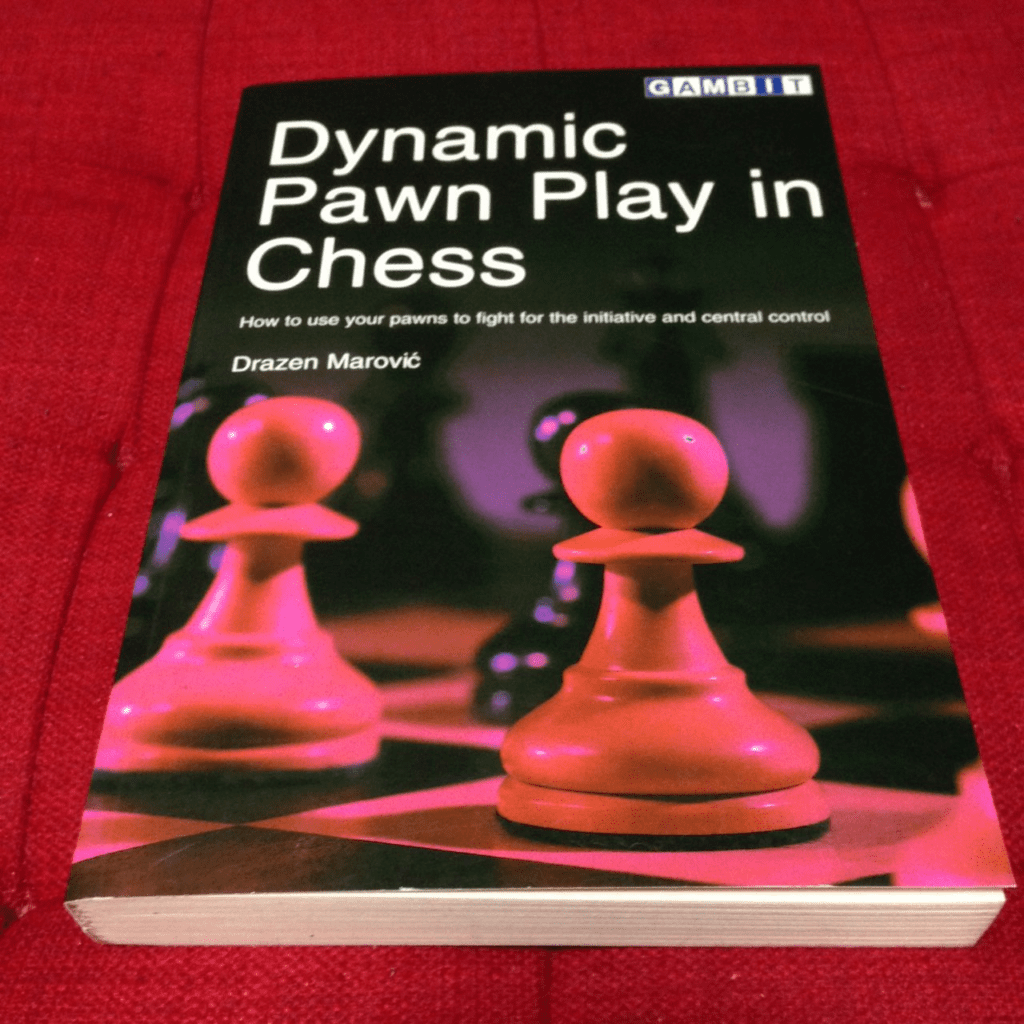In this article, I’ll highlight some of the best chess books to learn about the middlegame concept of pawn play.
To compile a list like this one, I made sure that the books featured were not just helpful. They should additionally provide a high educational value for all rating levels- on pawn play ideas and general chess understanding.
Let’s get right into it.
Chess Strategy for Club Players: The Road to Positional Advantage by Herman Grooten

What better way to start this list than with one of the most comprehensive books you will find about pawn play, strategy, and structures?
Herman Grooten’s book is one of the best you can find out there. Aside from the fact that the author is knowledgeable on the subject, Herman Grooten is a strong International Master who is a respected trainer in the Netherlands.
His teachings have produced several grandmasters- that knowledge is palpable in the book. More than half of the book teaches all you need to know about Pawn Play while the other half includes other necessary chess strategies.
One of my favourite sayings from the book is from the chapter on Passed Pawn;
“In general, we can say that a passed pawn on a board full of pieces functions as a kind of buffer for the player that has the initiative.”
Another reason the book is so good is the clear and logical explanation it provides for the various moves featured in the example games of these concepts.
Pros
- Perfect for anyone to read
- Features illustrative games to explain concepts
- Explain other strategies that implement pawn play
Cons
- Explains various strategic ideas aside from pawn play
Pawn Structure Chess by Andrew Soltis

This book is a classic which is now considered the bible on learning about Pawn Structures. Although the book might be tricky to read for absolute beginners, there is a lot of value to be gained from working through it.
The book does a great job introducing the several common types of pawn structures obtained from various openings.
While buying the book, take great care to get the algebraic notation edition (1986) since the older editions are in the descriptive chess notation.
Pros
- Suited towards professional players
- Features illustrative games to explain concepts
- Explains a lot of theoretical pawn structure concepts and ideas
Cons
- A bit dated for featured games and analysis.
Small Chess to Giant Improvement: Master Pawn Play in Chess by Sam Shankland

Grandmaster Sam Shankland’s first book became an instant bestseller and quickly solidified itself as one of the go-to books on pawn play written in recent times.
His style of writing and explanation is so clear that even beginners can easily understand complex.
The book has four sections, each touching on different pawn structure ideas.
I prefer Sam Shankland’s book because it touches on basics and hammers the chess fundamentals- such that one fully understands these concepts instead of brute cramming.
Pros
- Suited towards both professional and casual players
- Features recent illustrative games to explain concepts
- Explain the theory behind pawn structure concepts and ideas
Cons
- It is not as comprehensive as some other books on pawn play.
Winning Chess Middlegames: An Essential Guide to Pawn Structures by Ivan Sokolov

This book is from the famous Grandmaster- Ivan Sokolov, who defeated several World Champions during his active years. By the time the book was released, it was groundbreaking, featuring ideas not commonly addressed in chess books.
The only nitpick I have is how the book doesn’t cover a lot of pawn structure ideas.
Pros
- Perfect as an introductory book on Pawn Structure
- Features personalized analysis from Sokolov
Cons
- It doesn’t cover as much as one would expect from a book on pawn structure
Chess Structures: A Grandmaster Guide by Mauricio Flores Rios

This book has perhaps one of the most comprehensive knowledge about pawn play. The reader would learn all they need to know about pawn play and structures through 140 illustrative games with about 28 common pawn structures in chess practice discussed.
Although this book is for professional players, it remains one of the best on pawn structures.
Pros
- The concepts and ideas are explained in a structured way
- Has illustrative games and annotations to explain concepts
Cons
- This book is not a primer for beginners looking to understand positional pawn play and strategy.
Dynamic Pawn Play in Chess by Drazen Marovic

Dynamic Pawn Play is a follow-up to the author’s first book, Understanding Pawn Play in Chess. It is on this list because of its learning value in terms of complex pawn structures and the fundamentals of pawn play.
Aside from the emphasis on dynamic play, the book includes chapters on isolated pawns, hanging pawns, passed pawns, doubled pawns, backward pawns, pawn chains, and pawn islands.
Overall, the book comprises 142 illustrative well-annotated games, with the most comprehensive chapter being the one on dynamic play.
Pros
- Concepts and ideas are explained in a structured way.
- It has illustrative games and annotations to explain concepts.
- It also has a dedicated chapter that explains the concept of dynamic pawn play.
Cons
- A bit more on the advanced side.
Pawn Power in Chess by Hans Kmoch

The best way to conclude a list like this is by saving the absolute best for last.
This book is the Gold standard for all chess books on Pawn Structure and one every aspiring chess master must study.
Kmoch’s book is not an easy one to get through. However, for those who can, there is a lot of value to be gained from it.
One of the reasons the book is my favourite is because it has chapters on the various pieces and how they relate to the Pawns.
Pros
- Highlight the fundamentals for pawn play and structures.
- Features tons of educational games.
Cons
- Difficult to read for new players.
Final Thoughts
Like the great chess legend- Philidor said, pawns are the soul of chess.
So, any chess player seeking to become a master needs to understand them and why they are so important in chess. These books are one of the best ways to do that.
